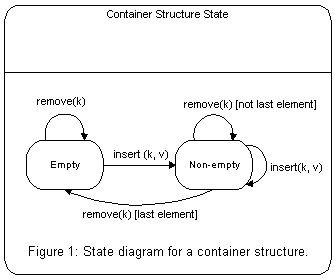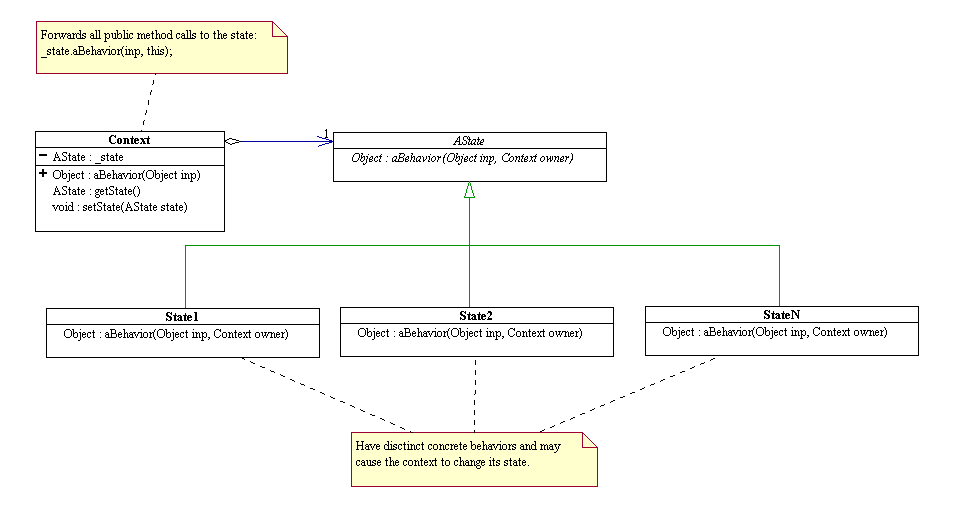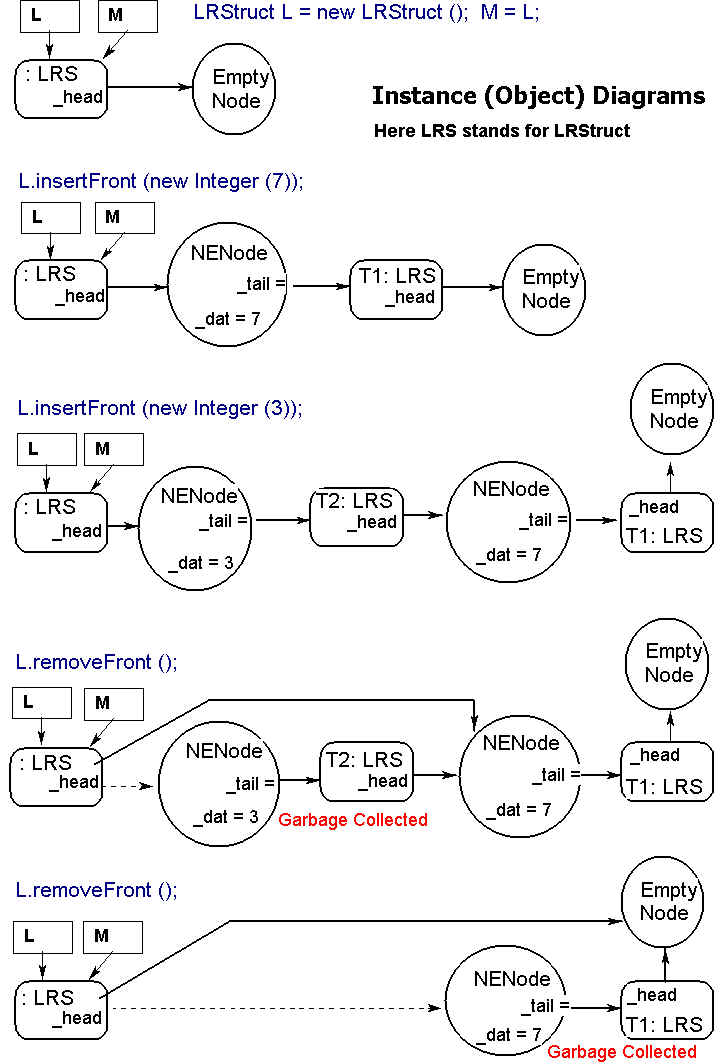
In programming, it is often necessary to have objects with which one can store data, retrieve data when needed, and remove data when no longer needed. Such objects are instances of what we call container structures.
A mutable container structure is a system that may change its state from empty to non-empty, and vice-versa. For example, an empty container changes its state to non-empty after insertion of an object; and when the last element of a container is removed, its changes its state to empty. Figure 1 below diagrams the state transition of a container structure.

For each distinct state, the algorithms to implement the methods differ. For example, the algorithm for the retrieve method is trivial in the empty state -it simply returns null- while it is more complicated in the non-empty state. The system thus behaves as if it changes classes dynamically. This phenomenon is called “dynamic reclassification.” The state pattern is a design solution for languages that do not support dynamic reclassification directly. This pattern can be summarized as follow.
· Define an abstract class for the states of the system. This abstract state class should provide all the abstract methods for all the concrete subclasses.
· Define a concrete subclass of the above abstract class for each state of the system. Each concrete state must implement its own concrete methods.
· Represent the system by a class, called the context, containing an instance of a concrete state. This instance represents the current state of the system.
· Define methods for the system to return the current state and to change state.
· Delegate all requests made to the system to the current state instance. Since this instance can change dynamically, the system will behave as if it can change its class dynamically.
Below is the UML class diagram for the state design pattern.

A mutable linear recursive structure (LRStruct) can be in the empty state or in a non-empty state. If it is empty, it contains no object. Otherwise, it contains an object called first, and a LRStruct object called rest. When we insert a data object into an empty LRStruct, it changes it state to non-empty. When we remove the last element from an non-empty LRStruct, it changes its state to empty. We model a LRStruct using the state pattern, and as in the case of the immutable list, we also apply the visitor pattern to obtain a framework.

